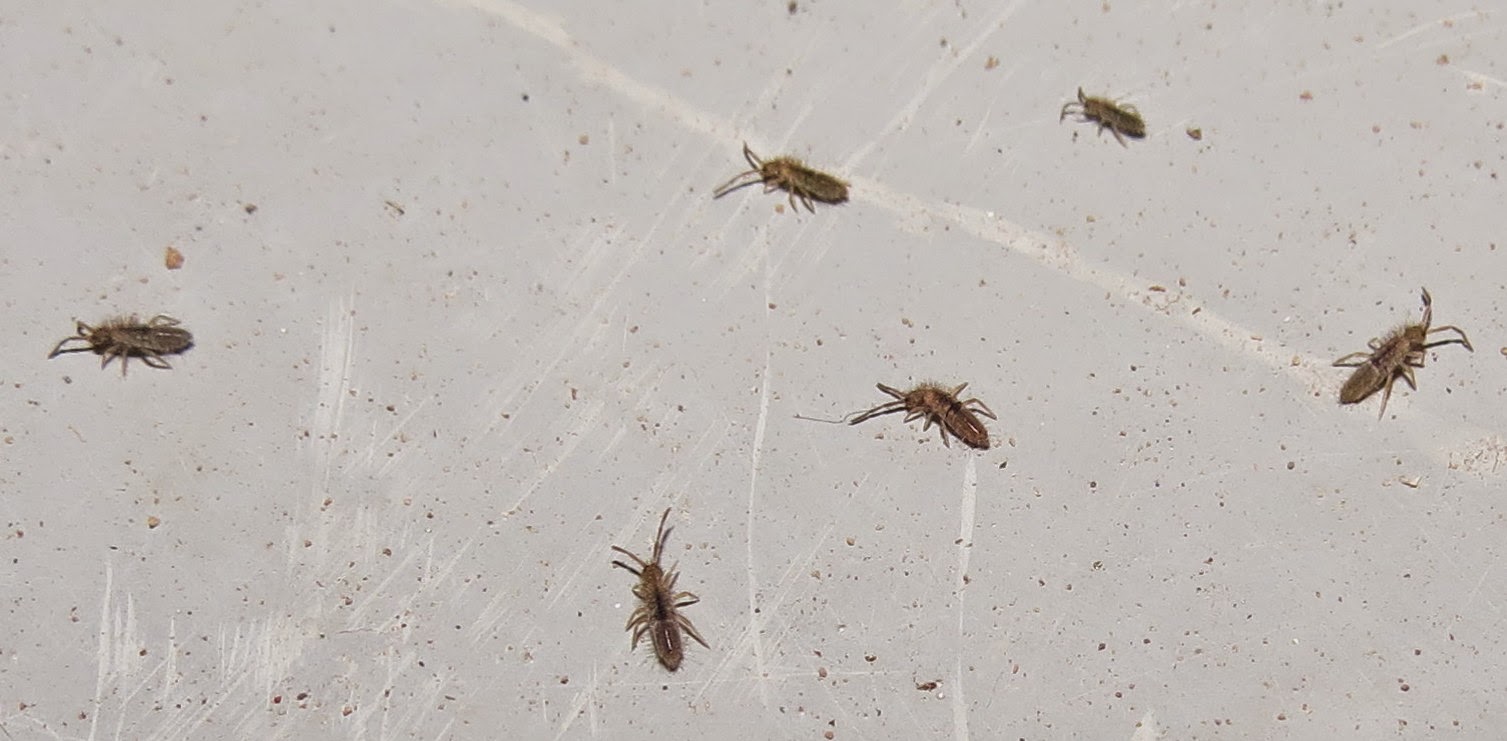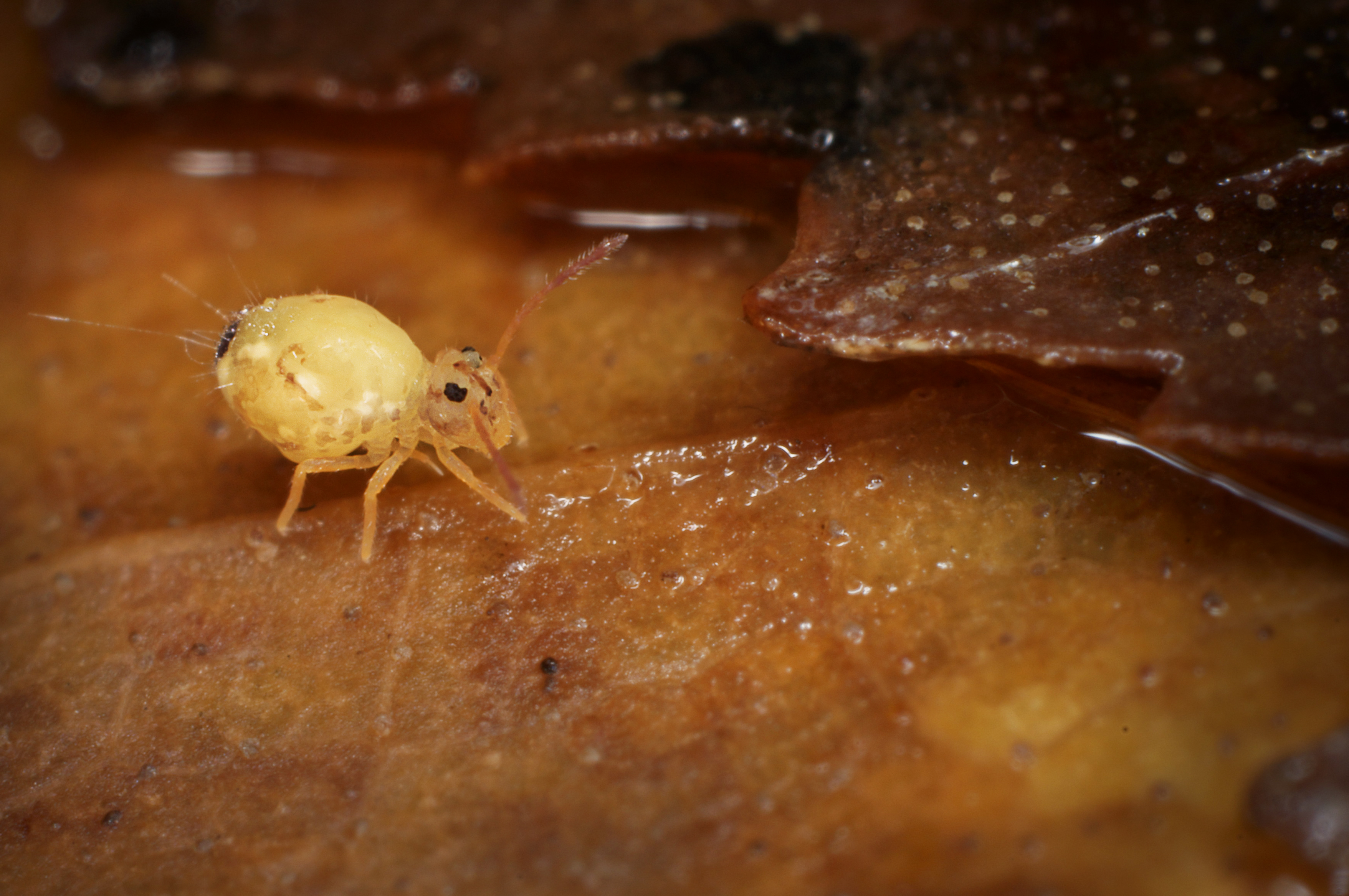I planted cantaloupe and watermelon seedlings in NJ a few weeks ago. I noticed the leaves are being eaten. There are these green insects and literally hundreds of these small jumping things all over the soil mounds. His sucks! I tried garden powder which didn't work this is an infestation.
What am I dealing with? And how do I destroy them? It is early enough in the season where I could start from scratch.
The big one looks like a nymph from a sqash beetle. They can suck the juices from the plant. But usually not associated with holes. I can't tell what the small one is. I don't see enough damage to the leaf to worry about it. Aphids would be found under the leaves and probably not jumping around. The little bug is definitely not an aphid.
Can you look under the leaves and see what is there?
Also if you can post a better picture of the small bug. When I zoomed it was not in good focus to identify it.
Can you look under the leaves and see what is there?
Also if you can post a better picture of the small bug. When I zoomed it was not in good focus to identify it.
imafan26 wrote:The big one looks like a nymph from a sqash beetle. They can suck the juices from the plant. But usually not associated with holes. I can't tell what the small one is. I don't see enough damage to the leaf to worry about it. Aphids would be found under the leaves and probably not jumping around. The little bug is definitely not an aphid.
Can you look under the leaves and see what is there?
Also if you can post a better picture of the small bug. When I zoomed it was not in good focus to identify it.
- rainbowgardener
- Super Green Thumb
- Posts: 25279
- Joined: Sun Feb 15, 2009 6:04 pm
- Location: TN/GA 7b
Some times the type of damage is more revealing than of the culprit even than the picture. Your leaf picture isn't well focused either. Is the damage only on the leaf edges? Is that just water drops on the leaves? Besides the edges, do the leaves have other marks on them or holes?
Could this be your little guy?

These are springtails. That is magnified. They are very small and usually do appear by hundreds.

this picture is someone's sink. When conditions get dry outside, springtails can sometimes move inside to moist places. That's when people worry about them most.
Yours look more rounded than these, but I did find pictures of springtail juveniles looking more round:

Here's a little more about them:
If you think it is springtails, they are usually harmless in the garden. They are detritovores, scavengers of dead,decaying stuff. They would not be what is damaging your plants.
Incidentally, take it easy. Your plants do not look "destroyed" at all, just slightly damaged. Plants can survive lots more damage than that and still be fine.
I have to go feed kitty. Show us some more pictures of the damage, including some that show the whole plant, so we can see the relative scope of the problem.
Best Wishes and hang in there with us, we will help you solve this!
Could this be your little guy?

These are springtails. That is magnified. They are very small and usually do appear by hundreds.

this picture is someone's sink. When conditions get dry outside, springtails can sometimes move inside to moist places. That's when people worry about them most.
Yours look more rounded than these, but I did find pictures of springtail juveniles looking more round:

Here's a little more about them:
https://www.ipm.ucdavis.edu/PMG/PESTNOTES/pn74136.htmlIDENTIFICATION
Springtails are minute, wingless insects about 1/16 inch long. They lay their round eggs in small groups in moist soil, especially where organic matter is abundant. The immature stage is usually whitish, and adults tend to be whitish, bluish, or dark gray to black. The immature stage differs from the adult stage only in size and color. Springtails get their name from the ability to jump up to several inches high by means of a tail-like mechanism (furcula) tucked under the abdomen. When disturbed, this appendage functions as a spring, propelling them into the air away from the danger.
HABITAT
Springtails live in soil, especially soil amended with compost, in leaf litter and organic mulches, and under bark or decaying wood. They feed on decaying plant material, fungi, molds, or algae.
If you think it is springtails, they are usually harmless in the garden. They are detritovores, scavengers of dead,decaying stuff. They would not be what is damaging your plants.
Incidentally, take it easy. Your plants do not look "destroyed" at all, just slightly damaged. Plants can survive lots more damage than that and still be fine.
I have to go feed kitty. Show us some more pictures of the damage, including some that show the whole plant, so we can see the relative scope of the problem.
Best Wishes and hang in there with us, we will help you solve this!
